30+ Customer Satisfaction Survey Questions to Help You Grow Your Business


One of your best resources as a business owner is your list of happy customers.
Those are the people who will keep coming back and refer business to you.
But how do you know how your offers, customer service, and brand are coming across to prospective and existing customers alike?
The only way to find out is to ask. And that’s exactly what surveys are for!
In this blog post, we’ll provide you with pre-designed customer satisfaction survey templates like this one, powered by Getform:
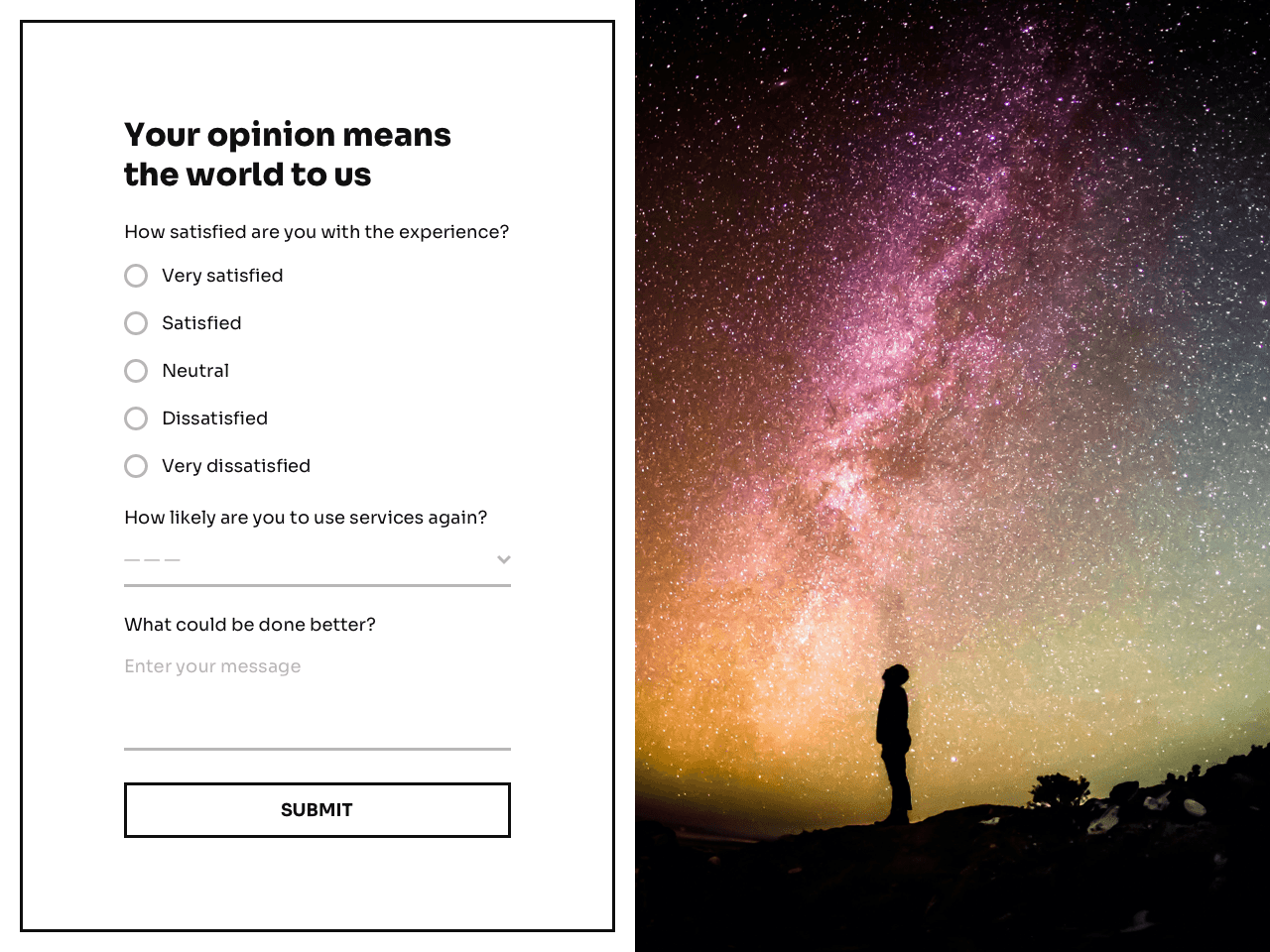
You’ll be able to grab any template, modify the copy or design, and send it to your customers.
Below, you’ll find 30+ more survey examples. Feel free to jump to any category you’re most interested in:
- Evaluate a product
- Get feedback on a service
- Verify your Net Promoter Score
- Ask about your website’s usability
- Validate your new product or service
- Discover where your customers are coming from
Try Getform for free
Intuitive online form builder with email marketing toolset.
Free plan available.
Now, before we get into details, let’s answer an important question 👇
Why should you conduct customer satisfaction surveys?
Whether you offer one-on-one services or sell products, it’s important to understand how the right people perceive you and your brand.
It’s possible to wait until clients or customers give you feedback on their own. But if problems arise, it may be too late to fix the issue if you wait until that point.
Customer satisfaction surveys allow you to take a proactive approach to receiving feedback throughout various stages of a customer’s journey.
But that’s not all! When you’re in charge of the context in which you receive feedback, you can influence the type of information you’ll receive.
On the other hand, feedback generated from a survey you crafted yourself will contain the feedback you actually need in order to improve your business.
Customer satisfaction surveys aren’t just meant to see if people are satisfied with your company, either. They can help you uncover tons of valuable information that will help you grow your brand over time – and resolve issues before they even arise.
Let’s take a look at some examples of what you can discover using surveys – as well as what questions to ask in order to get that information.
Evaluate a product
If people have purchased a product from you, timing is crucial.
Typically, you don’t want to wait too long to ask for feedback. But if you have a physical product, for example, make sure to account for shipping times so you don’t prematurely send out your survey.
Product satisfaction surveys are one of the simplest ways to get feedback. They are typically one-dimensional, but it doesn’t mean they aren’t valuable.
If you need to evaluate a product, you customer satisfaction survey may include questions like:
- How did this product compare to your expectations?
- Which of the following words would you use to describe our product?
- If you could change one thing about this product, what would it be?
- How likely would it be for you to purchase this product again?
Here’s a great example of a template you can use to create this sort of survey:
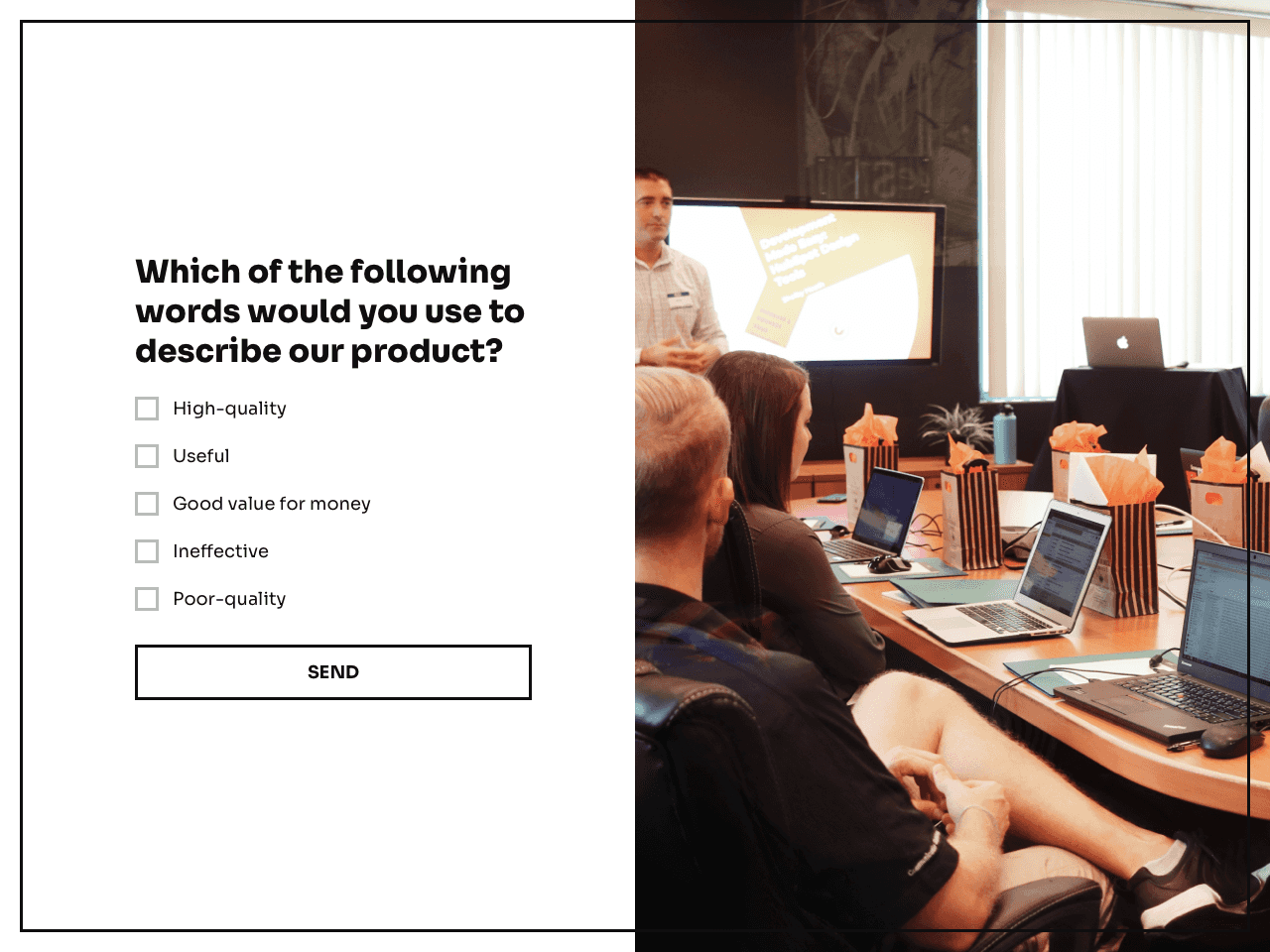
Although there is more than one question you can ask to estimate product satisfaction, you should stick to a single question per survey. Remember that your customers are busy and will be more likely to complete your survey if it’s short.
Get feedback on a service
Although getting feedback on a service is similar to products, it should be handled a bit differently.
If you provide one-on-one services, the experience is much more personal than receiving a product. There are many more aspects to a service that the customer may or may not have enjoyed.
For instance, you can provide an amazing service, but with sub-par communication skills, or vice versa.
The specific questions you can ask will vary drastically depending on what type of service you offer. However, here are some suggestions to get you started:
- How did your experience compare to your expectations?
- How satisfied are you with the overall experience?
- How would you rate communication during this project?
- Did this service help you achieve your goals?
- How likely are you to use our services again?
- What would you improve about this service?
Unlike the product satisfaction survey, it’s okay to add more than one question, just like you’ll see in this template:

That’s because your clients will be much more involved in the experience compared to just buying a product. Feel free to leave some open-ended questions to let them speak their mind freely.
Verify your Net Promoter Score
Even if a customer is satisfied with your service or product, it doesn’t mean they are actually loyal to your brand.
This is what Net Promoter Score can help you with.
In short, a customer’s Net Promoter Score ranges from -100 to 100. This scale measures how likely this customer is to recommend your product or services to a friend.
This gives you a much deeper sense of how much they actually value your brand. No one would recommend something to someone they respect if they didn’t believe someone else could also get satisfaction from it.
Typically, you can use a single question to figure out your net promoter score:
- How likely are you to recommend our company to a friend or a colleague?
The answers should range from 0 to 10.
This template comes fully ready with the single question you need to figure out your Net Promoter Score:
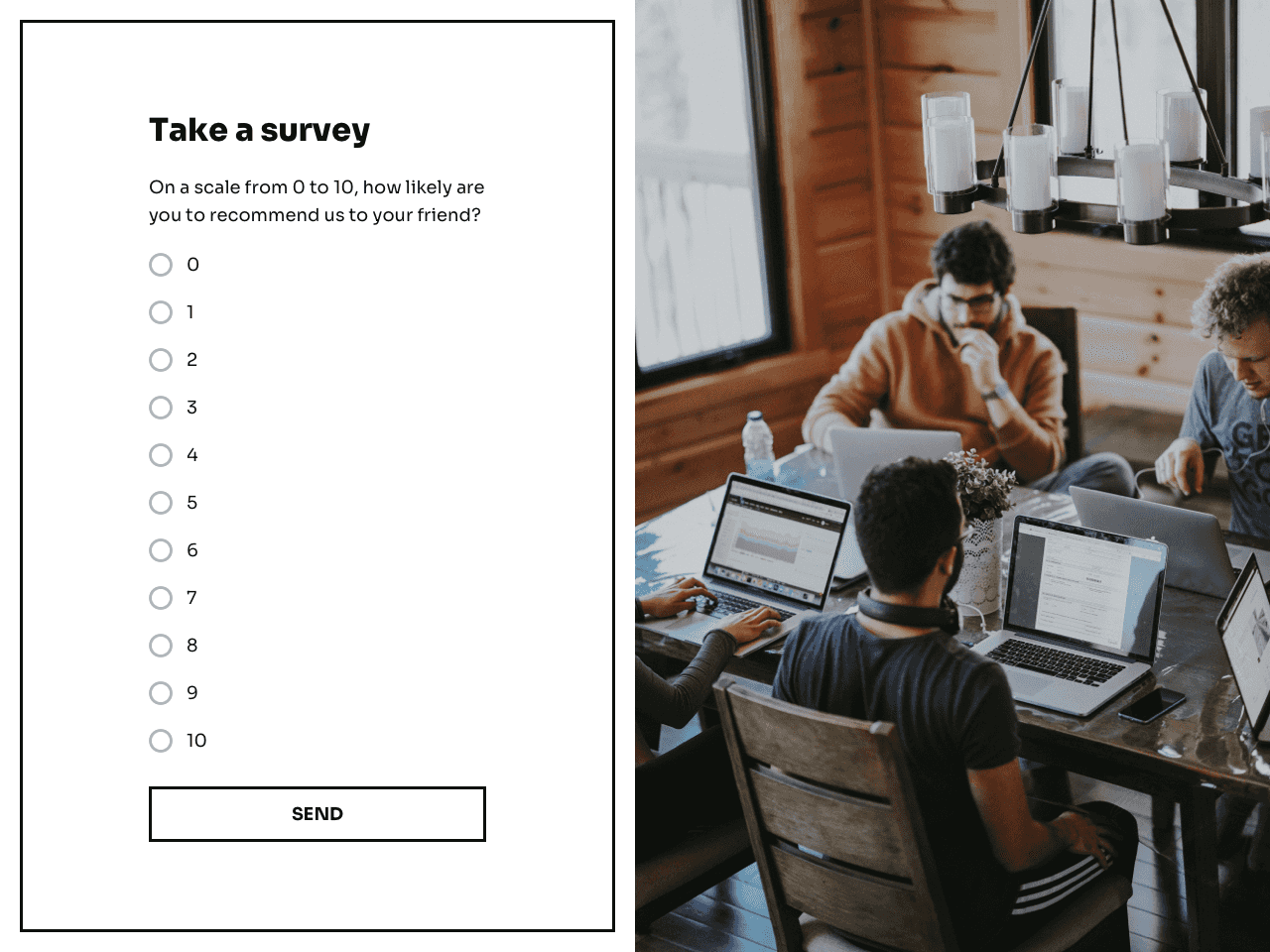
Ask about your website’s usability
You might be losing sales without realizing it if your website offers poor user experience. Customer satisfaction surveys will help you find the weak spot and eliminate the leak.
Here is a rule of thumb when it comes to user experience: there should be as little friction as possible between your offer and the potential customer. Clunky websites can distract the user and increase your bounce rate.
But this might not be obvious to you, especially if you don’t have a large development team. So ask, and you shall find out!
Here are a few customer satisfaction survey questions to verify usability:
- How satisfied are you with the experience on our website?
- Were you able to find what you were looking for?
- How easy was it to use our website? Did you experience any problems?
- If you could change one thing about our website, what would it be?
- How helpful was this page?
- How easy was it to complete the purchase?
You can ask these questions via email after a customer interacted with your website by using forms like this:
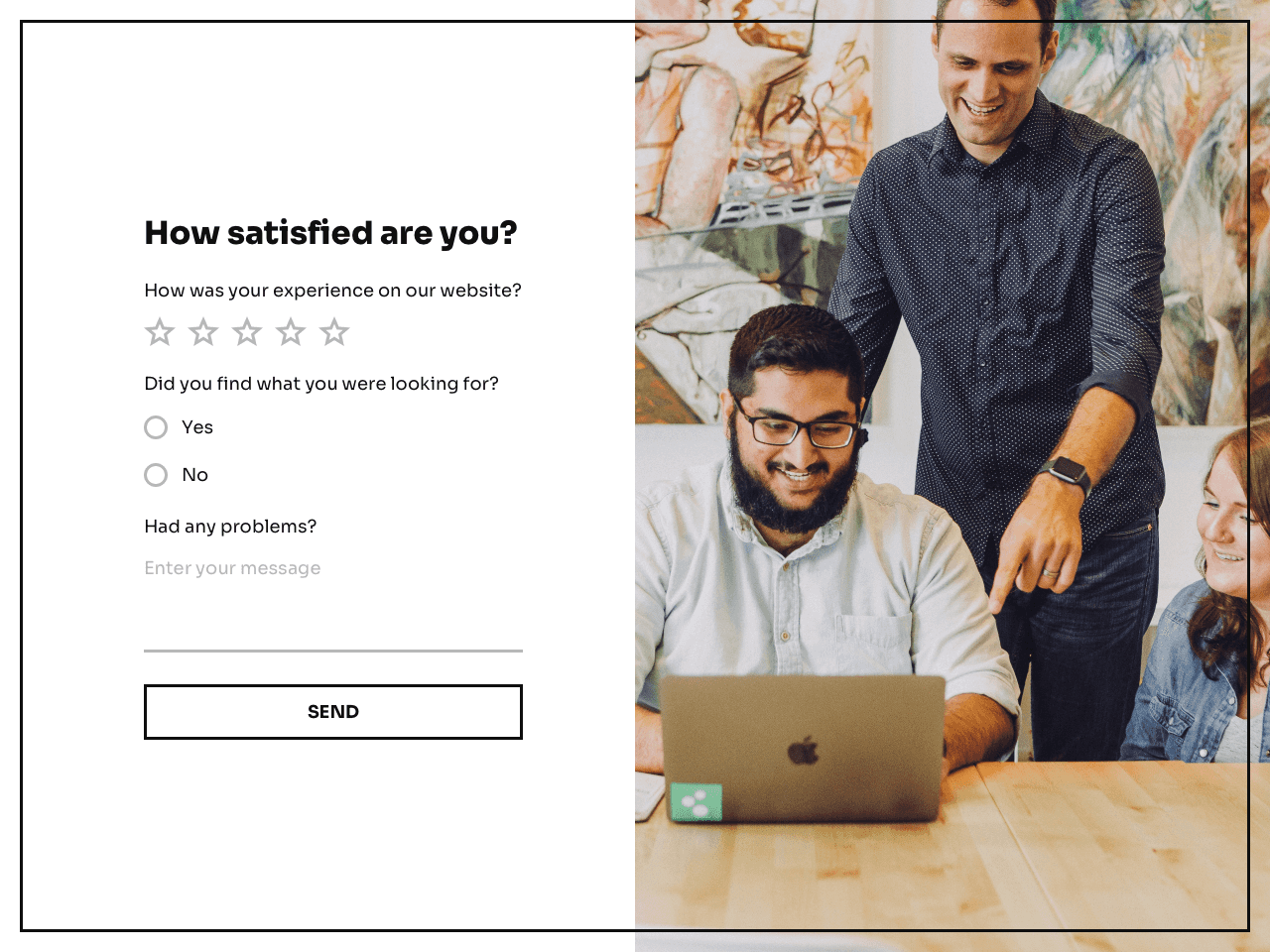
However, you can also display pop-up surveys to visitors that are currently on your website. To do that, you’ll need a website form builder like Getsitecontrol.
Validate a new product or service
While this isn’t strictly a customer satisfaction question, asking your existing customers to validate an idea you have for a new offer is a great way to mitigate risks and help you make the right decisions.
Your existing customers are already invested in your brand. They’ll be the best people to consult if you’re not sure whether or not your new concept is viable – unless your new offer is crafted for an entirely new audience.
So, before you invest in a new idea, you may want to ask the following:
- On a scale of 0 to 10, how likely would you be to purchase (your new offer)?
- If we launched (your new offer), what features would you like to see?
You can also ask more general market research questions, such as:
- What do you think is currently missing from our website?
- What would you like to see added to our list of products/services in the future?
- If you could make one change to our current list of products/services, what would it be?
The more loyal a customer is to your brand, the more time they will likely invest in answering questions like these. With this in mind, it could be a good idea to create more than one version of this type of survey.
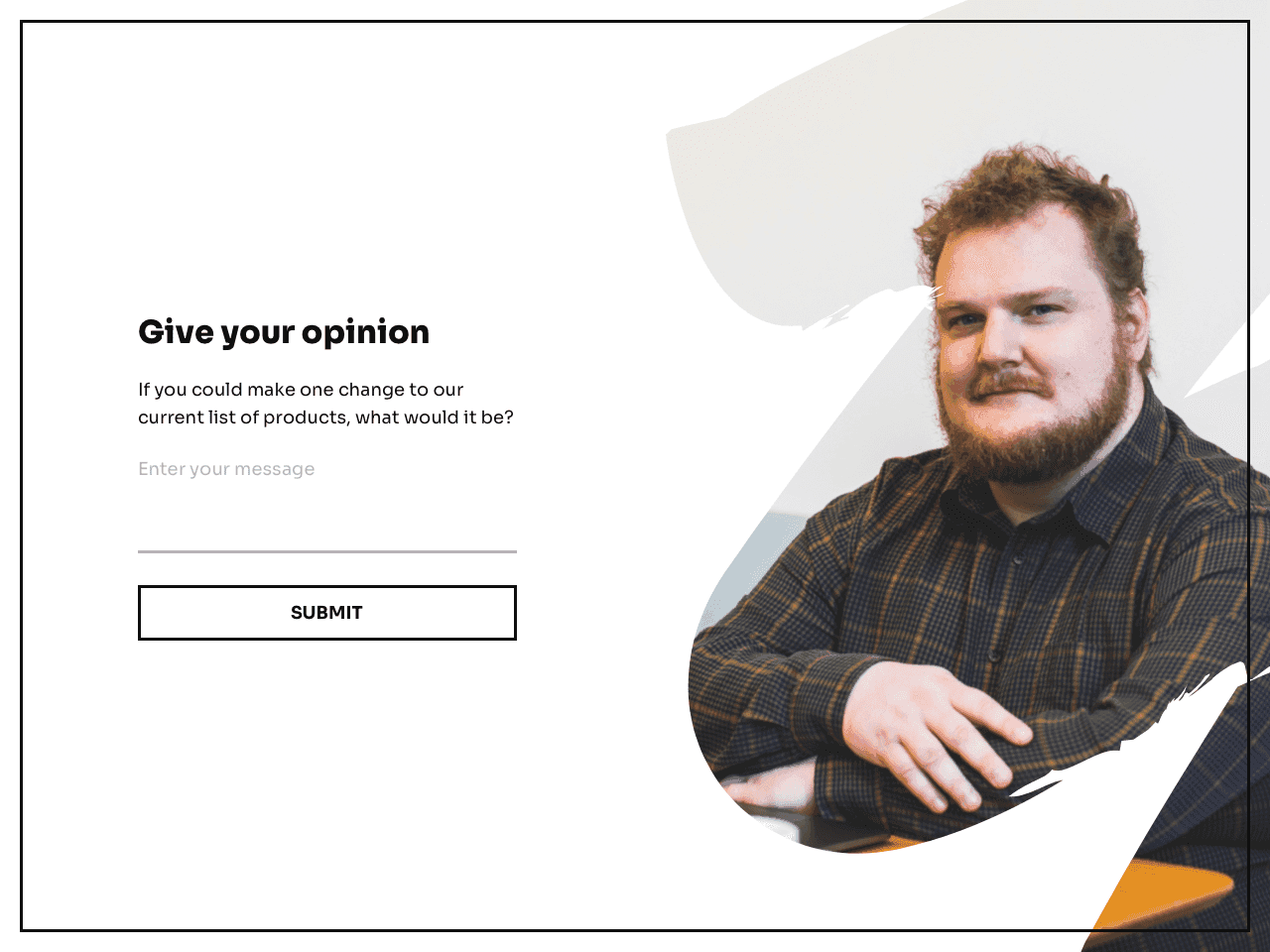
Get started in just a few minutes with this template and add more questions and pages to collect in-depth insights from your customers.
Bonus survey idea: find out how your customers think
Sometimes, it might be a good idea to conduct a different type of research before you even start measuring customer satisfaction at large.
If you’ve launched or are planning to launch a new product, your primary goal is to increase conversions and start getting sales. One of the ways you can increase your conversions and grow your business is through amazing copywriting.
And the best copywriting doesn’t try to guess what’s happening in the minds of customers. Instead, a great copywriter will use the voice of customer data to inform their work.
Voice of customer data consists of the real language customers use to discuss their desires, pain points, and how they perceive your products or services.
Your current customers may be using your products or services in a way you’ve never imagined possible – and this is highly valuable to help you improve your website copy!
There are many questions you can ask to find out about this, including:
- How are you currently using (name of your product/service)?
- What was one thing that almost stopped you from buying today?
- What is the number 1 reason you chose to buy (name of your product/service) today?
- What is the most useful feature of (name of your product/service)?
- How has (name of your product/service) impacted your life so far?
- What was going on in your life that led you to make this purchase?
Keep in mind that not all of these questions are meant to be asked at the same moment. For example, questions about why they chose to buy or what almost stopped them from buying should be asked as soon as possible after the purchase, but questions regarding the use of the product or service should be reserved for later.
Because these types of questions aim to collect voice of customer data, you should leave these questions open-ended, like so:

Discover where your customers are coming from
Now that you’ve measured your customer satisfaction, the next step is to get more customers.
So how do you achieve that? One way is to figure out where your customers came from in the first place in order to replicate the experience!
For example, you may discover that many clients are coming from referrals, or you could find out that they are finding you using search engines. Depending on the results, you can start optimizing this source of clients.
How? Well, if clients are coming from search engines, you know that investing in SEO would be a good idea to boost those results. On the other hand, if you are getting lots of referrals, there are several ways you can grow your business from that, such as:
- Sending gifts to the clients that are sending you referrals in the first place
- Starting a referral bonus and adding it to your end-of-project communication
- Adding a note at the bottom of your customer satisfaction surveys to remind happy customers to refer you to their friends or colleagues
To find this out, there’s only one question you need to ask:
- Where did you hear about us?
This question can be added to an onboarding questionnaire or intake form, like this:
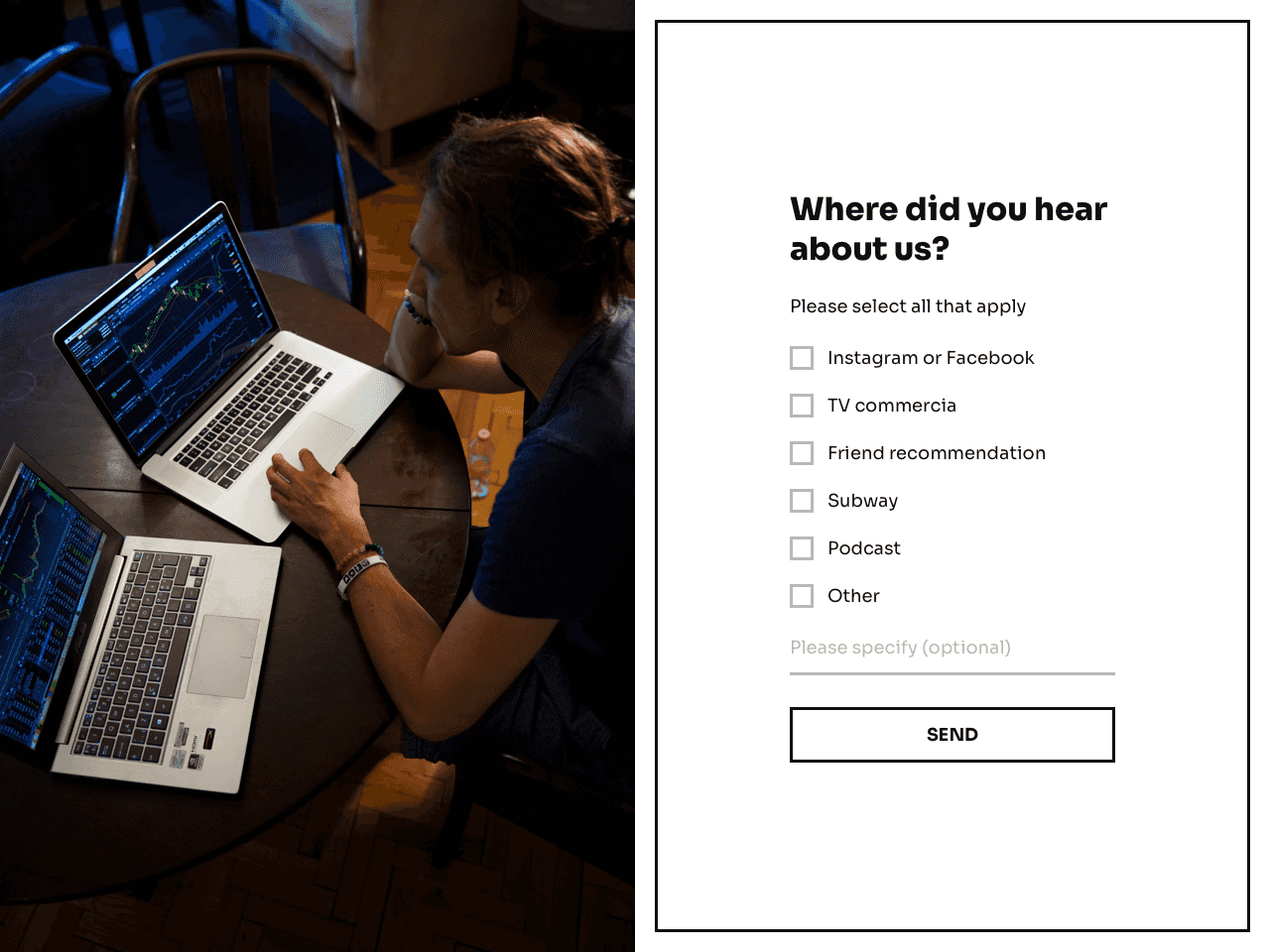
Increase retention and find more clients with customer satisfaction surveys
Make sure you always have a pulse on what your customers think by consistently surveying them.
Creating your surveys doesn’t have to be complicated and time-consuming. With done-for-you form templates, Getform allows you to collect customer feedback, even if you don’t have a website.
Try it out for free today!
Try Getform for free
Intuitive online form builder with email marketing toolset.
Free plan available.

Tips for your marketing strategy
Join creators worldwide
Grow your online business without a website. Generate leads, tag your subscribers, send promo emails, and build automations.
Get started, it's freethis week
this week
this week
this week
